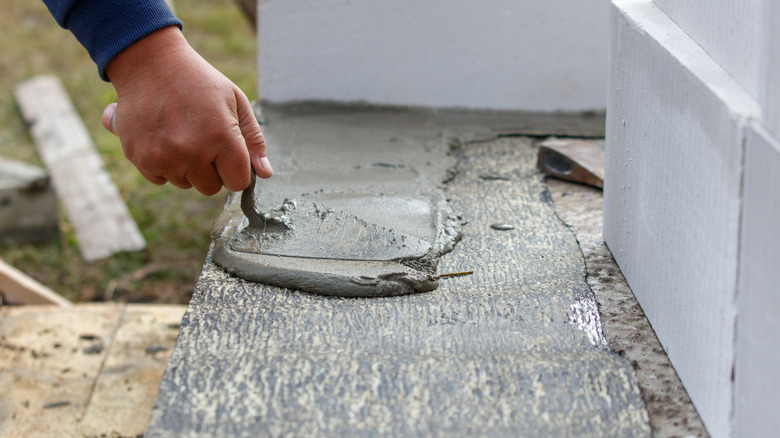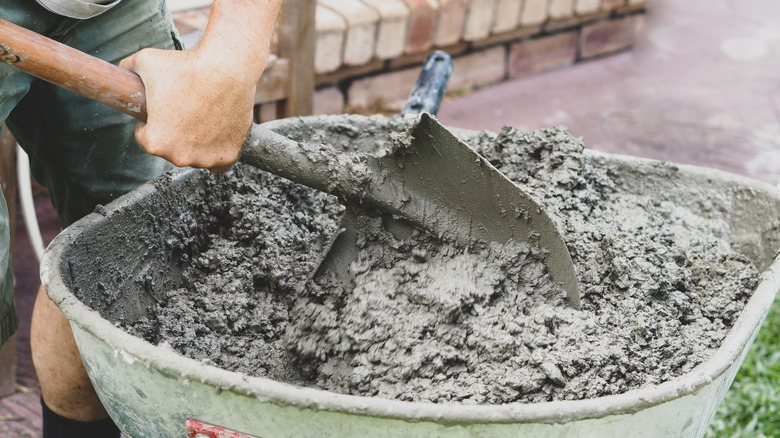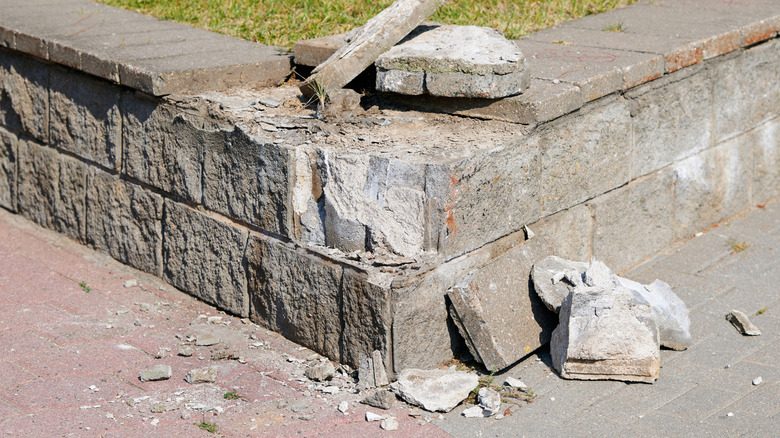The Dangers Of Confusing Concrete With Cement
Concrete and cement. Two seemingly similar products that frequently get confused. It's something that's perfectly understandable. After all, you often hear people talk about using cement in the foundations of their homes or cement being poured for sidewalks. You might buy a cement fountain or birdbath for the yard. So it might surprise you to know that each of those items is actually made of concrete. It's probably not important though, right? There isn't likely to be a problem if we use one instead of the other, is there?
Actually, there is. Concrete is a remarkably durable and versatile material that can be used for everything from dams and bridges to countertops and garden ornaments. Thousands of tons might be used for major construction projects, or you can mix up a batch in a wheelbarrow at home for DIYing a giant planter. On the other hand, cement is a powder. It lacks the strength for anything beyond repairing small cracks on its own. So the dangers of confusing concrete with cement should now be pretty obvious, but let's clarify by taking a closer look at the two materials.
The key differences between cement and concrete
Cement is quite a complicated material, typically made with bauxite, gypsum, limestone, sand, and a few other ingredients. They are all mixed together, heated in a kiln, and become what's known as clinker. This is then ground to a fine powder to make cement. There are several types, but the most common is Portland cement, which is what you'll usually find at the hardware store. Although it is used in mortar, the main use for cement is as a binder... in concrete.
Concrete is a mixture of cement, gravel (or chunks of stone), sand, and water. Varying those components produces concrete of different weights and strengths. Concrete is often mixed and poured on site but can also be precast. Slabs might be so large they need to be delivered by flatbed truck but can also be relatively small, like concrete pavers for patios or driveways (though there are downsides to the latter you will want to consider).
Premixed concrete is an easy option for DIY projects, like creating a stunning patio on a budget. The cement is already mixed in there, so you just add water. You'll find it at the local hardware store. Nearby there will probably be bags of cement. Don't confuse the two. While you can't make concrete without adding cement, on its own it is pretty much useless.
Why using cement instead of concrete is dangerous
Cement is vital for the making of concrete because when water is added, it creates a chemical reaction called hydration that binds the various components together. Gravel, sand, water, and cement become a single solid mass that gets stronger as it dries. If you're building a DIY concrete patio to add style to your yard, this mix provides the strength and durability to last for many years even with heavy use.
But cement on its own doesn't react in the same way. It will stick together when water is added, and it might look a lot like concrete, but it gains no strength as it dries and can easily crumble. If you tried using it for a patio it would simply break apart, wasting time, effort, and money. While cement is also used in mortar to build walls from bricks or blocks, sand and hydrated lime are added. If you just used a cement and water mix, there's a real danger the wall would fall over.
There are those who suggest cement can be used for patch repairs or grouting, but even then durability is likely to be an issue. Bottom line? Cement is necessary to make concrete, but there are few, if any, times that it can be used on its own. With its inherent weakness, using it for anything structural is downright dangerous.


